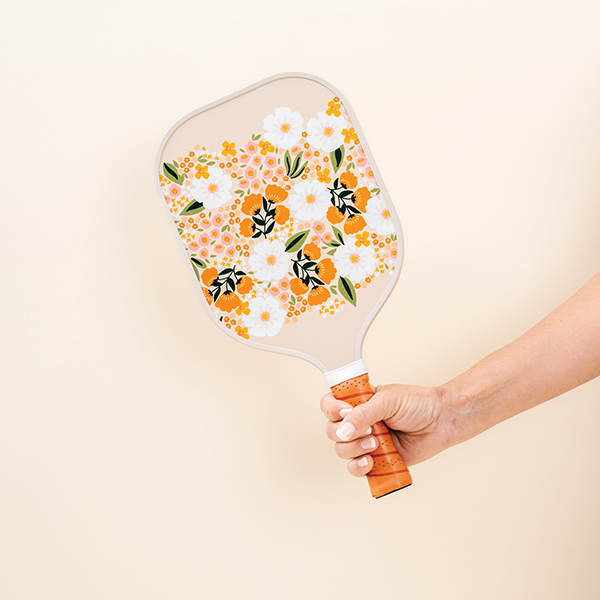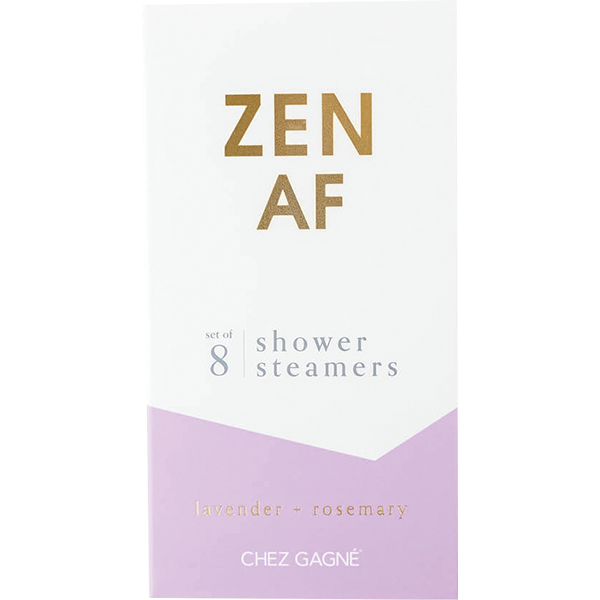Permanent Botanicals: Make Your Profits Blossom!
Smarty Plants
J M. H. Schwanke, a floral industry expert, believes the word “permanent” is a better qualifier for the stunning and gorgeous variety of flowers, bushes and greenery sold by many wholesalers. The care and detail that go into creating these permanent botanicals merit a better word than “artificial” or “fake,” Schwanke says.
By all indications Schwanke is right. From orchids to cacti, from tropical bushes to stems of dahlias, from Christmas greens to spring blossoms, there are permanent botanicals available for every season, taste and budget.
Sure, there are many, many permanent botanicals to choose from. But that’s not the only advantage the category enjoys these days. Technology and wonder materials have made these botanicals look just like the real thing. And that’s an advantage that is not easy to ignore.
Ardith Beveridge is a floral designer certified by the American Institute of Floral Designers and the author of many how-to books about faux florals. According to her, permanent florals (and botanicals) have traced an evolution in use of materials—from wax to cellophane to plastic and later, fabric. These days, says Schwanke, for many permanent botanicals, it’s EVA—ethylene vinyl acetate. EVA is a kind of foam product that is easy to work with and shape. It also helps that EVA looks and feels real and is a good substitute for silk. EVA in turn has been helped by a material called “memory wire” that helps the botanicals retain their shape no matter what the external conditions. Botanicals shaped using memory wire “remember” their original shape so they spring back to it even if they might get temporarily shifted around in the shipping or display process.
 The final result is that the quality of permanent botanicals has blossomed substantially over the years, says Beveridge. “The emphasis is on texture and the sophistication of the wrinkles, where before it was just shiny and opaque. They have a better look now and people are more apt to buy them,” she says.
The final result is that the quality of permanent botanicals has blossomed substantially over the years, says Beveridge. “The emphasis is on texture and the sophistication of the wrinkles, where before it was just shiny and opaque. They have a better look now and people are more apt to buy them,” she says.
Growing list of benefits
The convenience of permanent florals can’t be beat—they retain their shape and color without the need for water and are easy to care for with cleaning sprays made specifically for them; dust and dirt disappear in an instant without the use of a rag or duster. Permanent botanicals are kind to people with allergies and in today’s tight economy, customers like the idea of taking out their wallet only once.
“With our new lifestyles today, the permanent botanical makes so much sense,” says Schwanke. It is a symbol of a living plant and people who don’t have time for live or fresh botanicals can still achieve the chi presented by these products, he says. They add an accent of color and brighten up any room, Schwanke adds.
Variety blooms
Elaine Deelstra, marketing and education manager at wholesaler Sullivans says that stems, pre-made arrangements, and greens are their most popular sellers. “We think they are popular because of their simplicity and they are realistic. They are easy on the eye and an easy way to add a splash of color. They make good gifts because of the minimal care involved,” she says. Sue Jackson, operations manager at New Growth Designs based in Greenville, NC, says that most of their plants are made to appear “as they grow,” and are as botanically correct as possible. “We initiated the use of ‘Durt,’ our registered artificial soil,” she says. The company’s owner and designer, Ed Glenn, has been designing flower arrangements in acrylic “water” in their hand-blown glass vases and they are becoming increasingly popular.
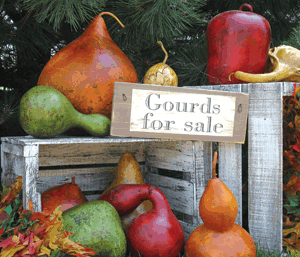 Roses and orchids are also very popular offerings in the category. “Roses are very popular and may always be America’s favorite flower. Orchids are still quite a draw because they give us that feeling of exclusivity. We think of orchids as a luxury product,” says Sharon McGukin, a certified designer with the American Institute of Floral Designers. She says that orchids fit in well with Asian-themed décor and with popular zen garden treatments.
Roses and orchids are also very popular offerings in the category. “Roses are very popular and may always be America’s favorite flower. Orchids are still quite a draw because they give us that feeling of exclusivity. We think of orchids as a luxury product,” says Sharon McGukin, a certified designer with the American Institute of Floral Designers. She says that orchids fit in well with Asian-themed décor and with popular zen garden treatments.
Laurie Burke, designer and owner of Immortalis Botanicals in Farmville, VA, designs orchid spheres on candlesticks to make an orchid topiary. Orchids are also a popular offering at New Growth Designs, which sells over 125 products that contain orchids.
To dry for
Dried botanicals are another option and there is a broad selection in this category as well; flowers, greenery, pods, gourds, berries, pinecones, and more. Rick Subtirelu, owner of American Dried, a wholesaler based in Hicksville, OH, says that the company grows some of their own products. They also buy from local farmers, but do the picking themselves. Other items are shipped from out of state. By using several growers throughout the country they can import products in the raw natural state and minimize the effects of natural disasters such as brush fires and flooding that can damage crops.
Subtirelu says that pinecones are picked up a year after they fall off of the tree. Factors such as air temperature, humidity, and the type of flower or pod determine the drying time.
A permanent market
Laurie Burke says Immortalis Botanicals has a large diversity of stores that buy: accessories, furniture, department, floral, garden, and gift stores, hotels, interior design firms, and catalog and online retail stores. Schwanke says that fruit markets and craft stores are big markets for these products as well.
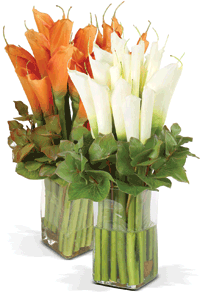 Retailer Lisa Warner is a big fan of permanent botanicals (especially the flowers) and has always carried them in her store, Around the Corner Gift Shop, in Covington, IN. Florals, bushes, and garlands make up the store’s permanent botanical collection. “A lot of people like them. I display arrangements throughout the store and color coordinate some of them with other items,” Warner says. If an arrangement looks nice enough to display in her own home it will pass the test to be sold in the store.
Retailer Lisa Warner is a big fan of permanent botanicals (especially the flowers) and has always carried them in her store, Around the Corner Gift Shop, in Covington, IN. Florals, bushes, and garlands make up the store’s permanent botanical collection. “A lot of people like them. I display arrangements throughout the store and color coordinate some of them with other items,” Warner says. If an arrangement looks nice enough to display in her own home it will pass the test to be sold in the store.
Cindy Tole, owner of Botanica Flowers and Gifts in Greensboro, NC, also does strong business in the category. Being a florist business, fresh flowers make up the majority of her sales, but, she says, there is a strong market for permanent florals as well. “The majority of people buy both,” she says. “Fresh flowers in general are given for special occasions such as birthdays, anniversaries, weddings, or to say ‘I love you’. However, most people also have something in their home that is permanent because they don’t want to spend money every week.” Tole gives her customers several options by carrying fresh flowers, live plants, and permanent botanicals. “[The customers] may have one special area, such as the entryway, for fresh flowers, and permanent florals and plants in other rooms,” says Tole.
Display options
Fresh and permanent florals are not cross-merchandised at Botanica Flowers and Gifts because fresh flowers are kept in a cooler. Permanent arrangements are displayed in settings that customers can envision in their own homes such as on the store’s mantle and small tables. They are cross-merchandised with gift items that work well with a floral arrangement, such as candles and potpourri.
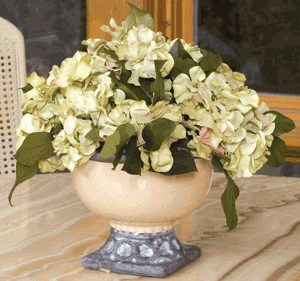 Larry Gottlieb is vice president sales & marketing for Allstate Floral & Craft, Inc., a wholesaler based in Cerritos, CA. He says customers will gravitate to a display of three or four styles of single stem flowers in a bucket. “A small greenery display of mixed styles, color, and texture are [also] good sellers,” he adds.
Larry Gottlieb is vice president sales & marketing for Allstate Floral & Craft, Inc., a wholesaler based in Cerritos, CA. He says customers will gravitate to a display of three or four styles of single stem flowers in a bucket. “A small greenery display of mixed styles, color, and texture are [also] good sellers,” he adds.
Tole also recommends displaying single stem flowers. “We have vases of stems so that customers can look at colors and shapes individually and pick out what they want,” she says. She sells bowls and vases and will make customized arrangements for shoppers who bring in fabric samples or pictures of the area of their homes where the florals will be placed.
Tole has been very impressed by the quality of the permanent botanicals over the years.” They are always improving,” she says. “Some are very realistic with natural colors and foliage. They look like fresh cut flowers when they sit in a vase.”
For every season
Schwanke says that after people take down their holiday decorations, the house looks bare and this is a great selling opportunity for retailers. He recommends tulips, anemones, roses, peonies, and dahlias for post-winter holiday florals that will look great indoors all year. There has been a resurgence of dahlias in the last three years and some are large—about the size of a dinner plate.
Zury Segal, director of marketing & product management at Aldik, Inc. in Moorpark, CA, says that spring and early summer are their busiest seasons, but fall is quickly growing as the color selection and quality of construction improve. “But we do not estimate that it will outpace spring [demand],” he adds. Color and other trends
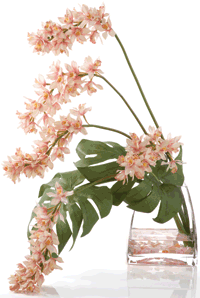 A box of crayons used to come with eight colors and now there are 64. Flowers are following this lead. “Color is the number one driver of any product,” says Schwanke.
A box of crayons used to come with eight colors and now there are 64. Flowers are following this lead. “Color is the number one driver of any product,” says Schwanke.
Sharon McGukin says blue is now more “icy” or electric. She also predicts that reds will turn more pink. “Orange is big in fashion right now and what we wear we tend to take home with us. With the Latin influence, we see a lot of really hot, hot colors,” says McGukin. “The neutral has gone from black to chocolate and is now going from chocolate to gray,” she adds. “Blues, greens, and pinks will have a gray tone to them.”
Burke from Immortalis is seeing a lot of warm browns and golden colors for the fall. Other popular choices are pinks, burgundy, cream, soft blues and olives and intense colors like bold yellow, red, lime green, and purples. Schwanke says that we can expect to see a lot of muted colors such as mushroom and oyster in 2009 and 2010.
Schwanke says the biggest trend now and for the immediate future is the emphasis on minimalist designs or the “spa” look. Single floral designs are very popular right now, he adds. So are interior plantscapes. “We’re also seeing plants becoming more popular. Cacti, jade, aloe vera, and agave, have a representation of power and strength,” Schwanke says explaining their growing popularity.
Sharon McGukin says it’s important for permanent botanicals to be botanically correct. “We want things that look as though they were grown that way,” says McGukin. Products with the roots exposed or branches that are tied have a very realistic look. “Tropicals and flowers like gerbera daisies that carry hot colors have emerged strongly,” adds McGukin who also says that the texture provided by large leaf foliage makes them popular elements as well.
McGukin also points out botanicals that complement the environment where they are being sold, will work well. For example, if your shop is located in the desert Southwest, selling cacti (instead of more lush tropicals) might be a good idea.
In today’s economic times, your customers are spending money wisely. The quality and shelf life of permanent botanicals makes them a very smart investment for your store. They just might have your profits blooming.



















